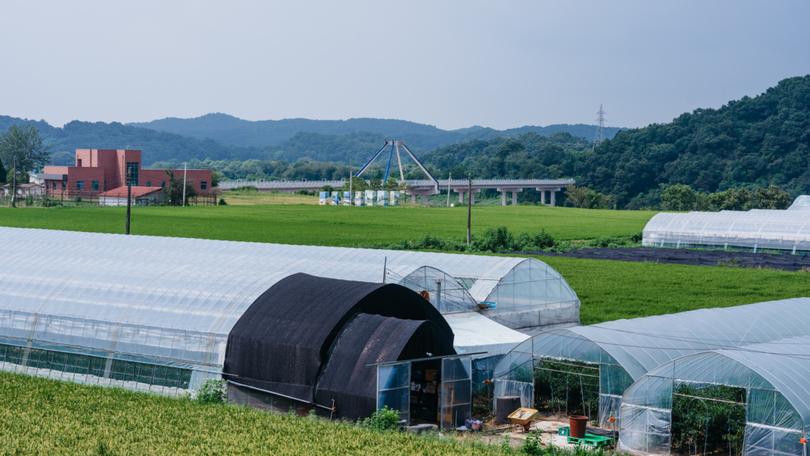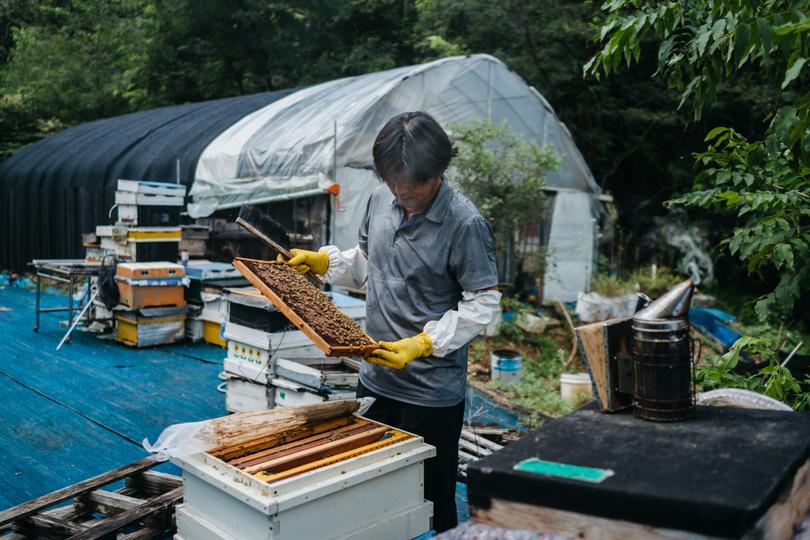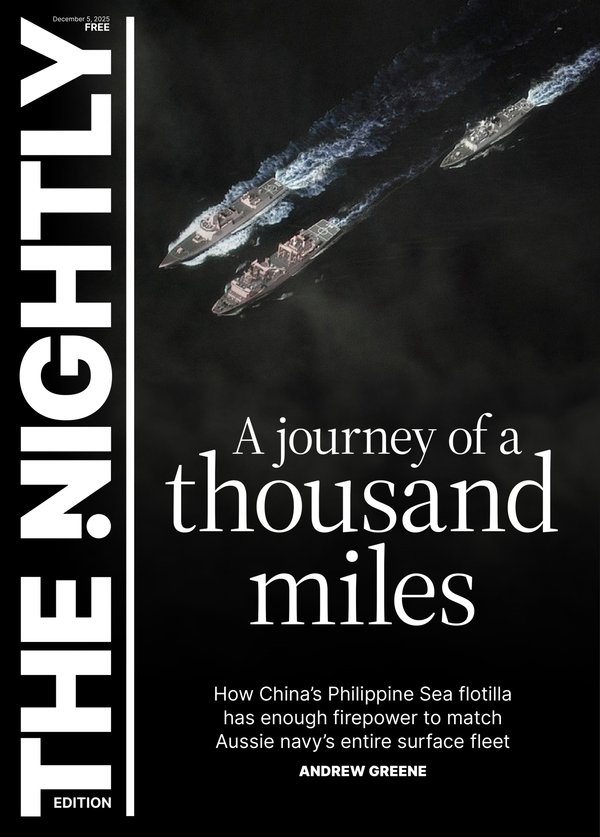The DMZ, between Korea and North Korea, is an unhealed wound for the region. It’s also a source of great honey

Cho Seong-hoan’s father liked to say that the honeybees on his farm were lucky. Unlike typical South Koreans, they could cross into North Korea, as he had done before war divided the peninsula.
“I also really envy them,” Cho, 59, said over the drone of bees on a searing summer morning at the family farm he took over when his father died in 2022. He was sitting about half a mile from the Demilitarised Zone, the 155-mile-long strip of land separating the Koreas that is littered with land mines and sealed by razor-wire fences.
Cho is one of roughly two dozen South Korean honeybee farmers working in a 6-mile-wide patchwork of rice paddies, forests, graveyards and firing ranges beside the 71-year-old DMZ. The area is known as the Civilian Control Zone and is heavily militarised and closed to most civilians.
Sign up to The Nightly's newsletters.
Get the first look at the digital newspaper, curated daily stories and breaking headlines delivered to your inbox.
By continuing you agree to our Terms and Privacy Policy.The work hasn’t made them rich, but the honey tastes great, thanks largely to the area’s exceptional biodiversity.
Some of the farmers are motivated by something that transcends business. In a land where a 1953 armistice divided many Korean families for generations, they are seeking closure for wartime traumas that have never quite healed.
Cho’s ancestral village in the western part of the zone was evacuated during the war and abandoned. It is now subsumed by undergrowth so thick that a visitor would not notice the site from a nearby road that leads to his farm.
“There are so many people still missing their hometown,” he said quietly, touching his heart.
Cho’s father was allowed to return to the controlled zone to farm in the 1970s. Other beekeepers have arrived more recently.
One of them, Park Jung-sun, said he was drawn to the border area because his father, who moved to South Korea during the war, was born in the North. Park, 45, said he planned to bury half his father’s ashes in the controlled zone. He is saving the other half to bury in his father’s hometown if the two Koreas are ever reunited.
“The Korean War means a lot to South Koreans, so it means a lot to use this land,” Park said at a farm he bought last year, which sits on the site of a former military installation. “It’s heartbreaking to think of and reminds you of the dark side of our different histories.”
The border area, about an hour’s drive from Seoul, South Korea, a city of nearly 10 million people, is not a normal place to work. Farmers enter it at a military checkpoint along the Imjin River, where they present special IDs that allow them to work, but not sleep, inside.
After zigzagging across the river on a heavily fortified bridge named after a fallen American soldier, they ride on empty roads past farmland, tombstones and live-fire ranges. The English-language signs outside the ranges — Idaho, Oregon, California — are a vivid reminder of how much the U.S. military has shaped the Korean Peninsula’s history.
Only a handful of South Koreans are allowed to live inside the DMZ and the controlled zone, and the roads inside the zone are eerily quiet. Every so often, the sound of explosions from the firing ranges competes with the whir of cicadas in nearby tree lines.
Steps from where the controlled zone meets the DMZ, “Restricted Area Warning” signs poking out of high grass tell drivers not to proceed any farther.
The bees are under no such restrictions. And because many parts of the controlled zone and DMZ have been allowed to grow wild for decades, the area is bursting with flowers that provide a diverse mix of nectar and pollen.
The 6-mile width of the controlled zone is greater than an average honeybee’s range. But Cho said his farm is close enough to the 2.5-mile-wide DMZ that his bees can easily fly inside — perhaps even reaching North Korean territory — several times a day.
Cho said his margins are tight because his honey takes so much effort to produce and the cold winters kill off bees. He said that his wife urges him to coax more honey out of his hives but that he has learned to respect his bees’ natural rhythms instead of ordering them around.
“If you enjoy what you’re doing, the result is better,” he said, sitting in a red plastic chair on the farm. He didn’t flinch as a bee landed on his elbow.
Beekeepers in the border area account for a fraction of the nearly 40,000 in South Korea, said Pak Se-yeong, who keeps hives in the controlled zone and is the secretary-general for a branch of the Korea Beekeeping Association. The farmers there tend to distribute their honey by word-of-mouth or through small retail shops, he said, and their children sometimes help them sell it online.
One customer, Lee Eun-jung, accompanied Park to his farm in June because she was curious about seeing the controlled zone. She ended up buying nearly 90 pounds of his honey and giving it to several friends.

“There were no high-voltage lines, no factories and no houses,” Lee said of the area. “It was natural, so it was trustworthy.”
Honey from the controlled zone tends to be very good, partly because farmers there use small-batch methods and allow their bees to roam widely across an exceptionally biodiverse landscape, said Lee Jae-hun, a honey sommelier in Seoul.
Still, he said, the honey does not have the sort of high-end cachet that many South Korean consumers attach to certain types of wine, coffee or kimchi. That means they aren’t willing to pay a premium for it.
“Good honey or bad honey, they don’t know,” Lee said.
One cocktail bar in Seoul, Pomme, used honey from the controlled zone in a few seasonal cocktails, including an interpretation of a brandy alexander featuring mezcal and banana liqueur. But the bar eventually decided that the honey — which cost more than three times what it normally pays — wasn’t worth the money when typical customers didn’t appreciate the distinction, said Sumin Woo, the manager.
Cho said he was determined to keep producing his small-batch DMZ Flower Honey on thin margins. Every year he sells about 264 gallons that he packages into glass bottles of just over a pint that retail for about $33.
Cho is also an accomplished potter. Some of his ceramics are on display in a ramshackle building on his farm, alongside black-and-white portraits of his extended family. He gave up pottery about 10 years ago, he said, because he felt he had reached the limit of his artistic abilities.
But the bees have held his interest ever since his father started the honey operation in 1998. When he inherited the farm, deciding to keep it going was an easy call.
“People told me, ‘It’s too hard and you’ll give up right away,’” he said as he drove near the Imjin River checkpoint. “But I’m still here. My father taught me well.”
This article originally appeared in The New York Times.
© 2024 The New York Times Company
Originally published on The New York Times
